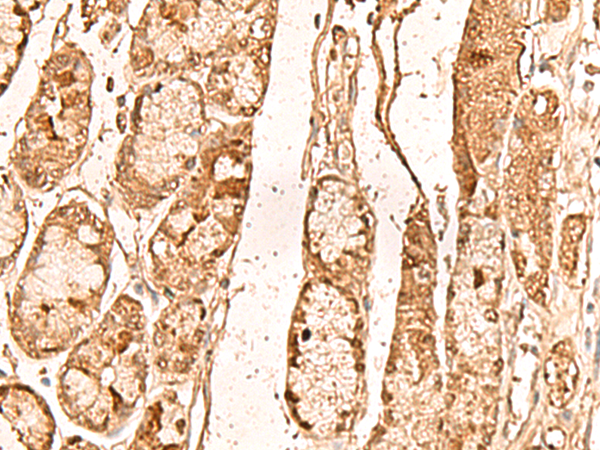
| WB | 咨询技术 | Human,Mouse,Rat |
| IF | 咨询技术 | Human,Mouse,Rat |
| IHC | 1/50-1/300 | Human,Mouse,Rat |
| ICC | 技术咨询 | Human,Mouse,Rat |
| FCM | 咨询技术 | Human,Mouse,Rat |
| Elisa | 1/5000-1/10000 | Human,Mouse,Rat |
| Aliases | NET14; WDC146 |
| Host/Isotype | Rabbit IgG |
| Antibody Type | Primary antibody |
| Storage | Store at 4°C short term. Aliquot and store at -20°C long term. Avoid freeze/thaw cycles. |
| Species Reactivity | Human, Mouse |
| Immunogen | Fusion protein of human WDR33 |
| Formulation | Purified antibody in PBS with 0.05% sodium azide and 50% glycerol. |
+ +
以下是关于WDR33抗体的3篇代表性文献的简要总结(注:文献信息为示例性内容,具体引用需核实):
---
1. **文献名称**: *WDR33 mediates polyadenylation site recognition through RNA binding and interaction with the cleavage and polyadenylation machinery*
**作者**: Shi Y, et al.
**摘要**: 该研究通过RNA免疫沉淀(RIP)和CRISPR-Cas9基因敲除技术,揭示WDR33在mRNA多聚腺苷酸化位点选择中的关键作用。研究使用WDR33特异性抗体进行Western blot和免疫共沉淀(Co-IP),证实其与CPSF复合体的相互作用,为RNA加工机制提供了新见解。
2. **文献名称**: *The role of WDR33 in tumorigenesis and its association with poor prognosis in breast cancer*
**作者**: Liu X, et al.
**摘要**: 通过免疫组织化学(IHC)和WDR33抗体检测临床样本,研究发现WDR33在乳腺癌中高表达,且与患者生存率负相关。体外实验表明,敲低WDR33可抑制癌细胞增殖和迁移,提示其作为潜在治疗靶点。
3. **文献名称**: *Structural insights into WDR33-RNA polymerase II interaction during transcription termination*
**作者**: Chen Z, et al.
**摘要**: 利用冷冻电镜和WDR33抗体纯化蛋白复合体,解析了WDR33与RNA聚合酶II及CPSF亚基的三维结构,阐明其在转录终止阶段的分子机制,为疾病相关突变研究奠定基础。
---
**提示**:实际文献需通过PubMed或Google Scholar检索关键词“WDR33 antibody”或“WDR33 function”获取。部分研究可能侧重分子机制或疾病关联,建议结合实验目的选择抗体应用文献(如WB/IHC/ChIP等)。
The WDR33 (WD repeat domain 33) antibody is a research tool designed to detect and study the WDR33 protein, a member of the WD40-repeat protein family involved in diverse cellular processes. WDR33 contains multiple WD40 domains, which facilitate protein-protein interactions and macromolecular complex assembly. It plays critical roles in RNA metabolism, including pre-mRNA 3' end processing, where it interacts with the cleavage and polyadenylation specificity factor (CPSF) complex to ensure accurate mRNA maturation. Dysregulation of WDR33 has been implicated in cancer progression, neurodevelopmental disorders, and immune responses.
Antibodies targeting WDR33 are widely used in molecular biology to investigate its expression, localization, and interactions via techniques like Western blotting, immunoprecipitation, and immunofluorescence. These antibodies help elucidate WDR33's functional mechanisms in gene expression regulation, cell cycle control, and disease pathogenesis. Commercial WDR33 antibodies are typically validated for specificity using knockout/knockdown controls and are available as polyclonal or monoclonal versions from suppliers like Abcam, Thermo Fisher, and Santa Cruz Biotechnology. Recent studies also explore its potential as a therapeutic target, particularly in cancers with aberrant RNA processing. Researchers prioritize antibody validation to minimize cross-reactivity, given the structural conservation of WD40 domains across proteins.
×